Travel across the length and breadth of India and you’ll discover that one of the most enchanting things about this ancient country is how so many wondrous aspects of its culture are celebrated through its festivals and fairs. It doesn’t always have to be a huge pan-India affair; sometimes even the local festivals–related to the agri-culture of the region, some local deity being venerated or even the celebration of the works of artisans. Any which way, the traveller guaranteed to return home with loads of enduring memories of the great energy, the colour, the costumes, the music and dance and the liberating abandonment of living in the moment!
Holi
You will love this effervescent festival of colours, which mirrors the rejuvenating, exhilarating energy of an Indian spring marking the end of a long, hard winter. Held in March, Holi is all about colour, general bonhomie, and sheer joie de vivre.
While one might get a tad intimidated by the unique, but boisterous Lathmar Holi of Vrindavan. Here the women of Barsana village playfully beat Nandgaon men with sticks (laths), as a re-enactment of the Radha and the gopis (milkmaids) beating naughty Krishna and his friends. But you will love the gentler form of the festival at the Dargah of Sufi saint Nizamuddin Auliya in Delhi, where the saint’s beloved disciple poet Amir Khusrau started its celebration with everyone playing Holi with yellow and orange flowers the–colours of spring. If you are in Punjab, you will get to see some of the most extraordinary celebration of the festival with Holla Mohalla, held just a day after the festival of Holi. An annual Holi tradition here, this is a high-wired showcase of the martial splendour of the Nihang Sikhs ( the Holy Warriors’ of 10th Sikh Guru Gobind Singh), in full battle regalia traditional, their towering blue dumalas (double layered turbans) embellished with miniature weapons, blue standards held aloft and riding bareback on their high-stepping horses. You should do the short drive from Amritsar city to Anandpur Sahib, where this high octane drama unfolds. Look on in awe at the amazing skills of gatka (stick fight), wrestling, sword fighting,t bare-back horse riding, tent pegging and archery. If you are Kolkata, drive out to nearby Shanti Niketan to celebrate this Basant Utsav (Spring Festival). Poet Laureate Rabindranath Tagore introduced the Holi celebrations here. Merrymaking in traditional yellow attire and the gentle smearing of colours on your companion are quite a sight to behold at the university in Bolpur.
Pushkar Fair
What was once a livestock trade fair has been transformed into a cultural extravaganza unfolds each year on Kartik Purnima (Oct-Nov) Rajasthan’s most sought after festive occasion. With cows, camels, sheep, goats up for sale and traders galore at the site, you can barely get a foothold or a place to pitch a tent. Having paid their respects at one of the few temples dedicated to Lord Brahma, after a ritual dip in the holy Pushkar Lake, traders buckle down to business of some hard bargaining. The weeklong fiesta is as immersive an event as you could get off the ‘real India’. Attention-grabbing acts unspool all around. There are tug-o-wars and horse riding skills, storytellers and magicians, gaily decorated camels and gorgeously attired women in traditional costumes. Expect to enjoy traditional eats at the stalls and some lovely souvenir shopping too!
Hemis Festival
Ladakh’s ancient ties with Tibetan-Buddhism are richly mirrored in the scatter of chortens and gompas and mani walls across the length and breadth of its spiritual and cultural landscapes. With almost 50 percent of its populace being Buddhist, visitors get to enrich themselves with the fabulous tapestry of religious art and architecture. The world’s largest tangkha is housed in the chambers of the 17th century Hemis Gompa (43 km), one of Ladakh’s richest monasteries. They only bring it out for public darshan (viewing) every 12 years. The ritualistic annual Hemis Festival held in summer (July) celebrates Guru Padmasambhava, the founder of Tibetan Buddhism, with a rich pageantry of masked dances, music and song. It is a truly soul-stirring experience.
Hornbill Festival
Nagaland’s rolling vistas beckon visitors to explore this verdant strip of land bordered by Myanmar, Assam, Arunachal Pradesh and Manipur. The secret world of the Nagas is one of the most intriguing, as they are one of the most distinctive and proudest people of the Northeast. An opportunity to delve into just a small part of their world is the fantastic 10-day extravaganza of the Hornbill Festival. Savour this ethnic splendour in its astonishing costumes and headgear, the folk dances, traditional music, tribal rituals, indigenous games, culinary delights and unique handwoven textiles. Take home a slice of Nagaland- buy a Naga shawl. Did you know that these are not just a wrap against the cold? They are actually rich with symbolism. Each tribe has its own special patterns and motifs, and they stated even certain ceremonies in the weaving of these beautiful wraps.
Dev Diwali
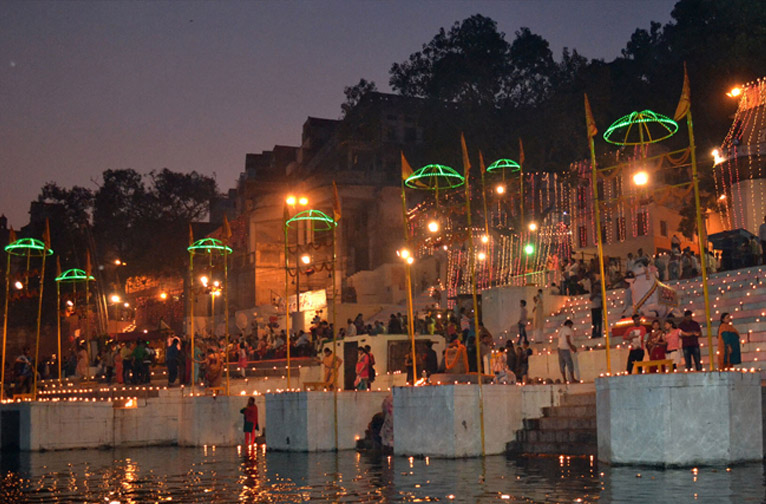
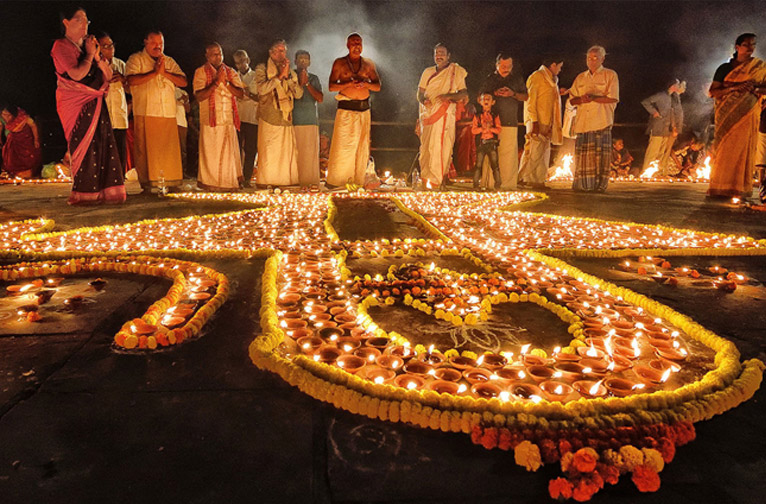
One of your unique experiences of India’s ‘festival of lights’, Diwali (Oct/Nov),which celebrates the homecoming to Ayodhya, of Lord Rama from 14 years of exile, is in the holy city of Varanasi. It’s only here that by tradition, Diwali is celebrated twice. While Diwali festivities break out on the moonless night of Amavasya, with the blaze of thousands of oil lamps cutting the darkness, Dev Diwali is celebrated on the following full moon night, on Kartik Purnima, 15 days later. Varanasi is the abode of Lord Shiva and Dev Diwali is also known as Tripurotsav, since, as legend has it, the Lord defeated the asura Tripurasura on this day considered being highly auspicious. All the gods leave the heavens to congregate at Kahsi/ Varanasi to to welcome the triumphant Shiva. Devotees shine up the Ganga and the sacred ghats with thousands of lighted oil lamps to greet the gods. The festivities begin with the chanting of Vedic mantras, ritual purifications, and fabulous aarti at the Dashwamedha Ghat. Musical programmes can also be enjoyed by the holy river. Get here at least a day ahead as it’s hard to get hotel bookings.
Kumbh mela
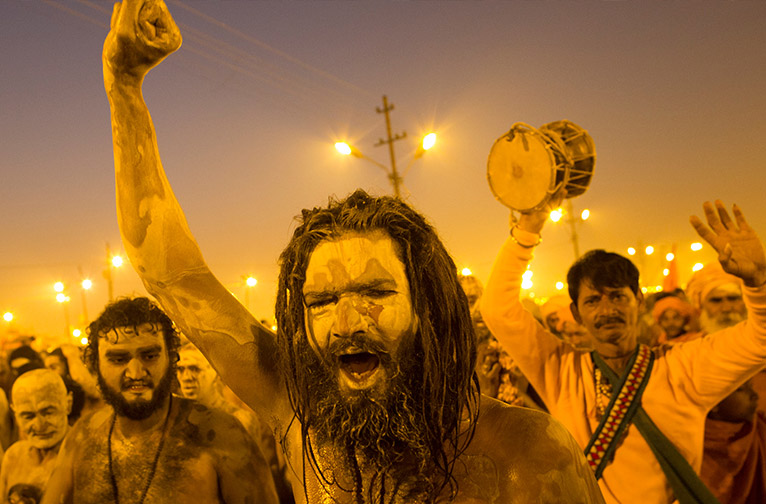
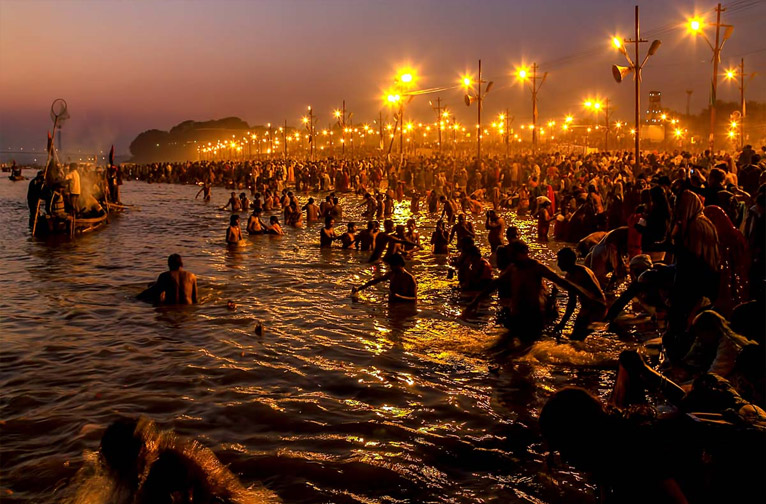
The great Kumbh Mela, considered amongst the largest religious gatherings on earth, finds its roots in the epic battle between the gods and the demons for the pot (kumbh) of elixir of immortality (amrit) produced by their joint churning of the milky ocean. Attributed to the Hindu Puranas (a collection of legends and myths) this narrative reveals how in the struggle precious drops of the nectar spilled on to four places on earth: Haridwar, Prayagraj (Allahabad), Nashik/Trimbakeshwar. It is said that during the celebrations of this celestial event (held in a cycle of 12 years at each sacred site) the rivers here turn back into that primordial nectar at the auspicious moment (in keeping with the synchronisation of the astrological positions of the Sun, the Moon, and Jupiter), giving pilgrims the chance to bathe in the essence of purity. Celebrations at the primary spot, Prayagraj, nestling by the holy confluence of the Ganga, Yamuna and mythical Saraswati rivers is one of the most energising exponents of this cultural and religious extravaganza. And if you are at any of these four riverside sacred places scattered across India, make it a point to join in this immersive festival.
Diwali
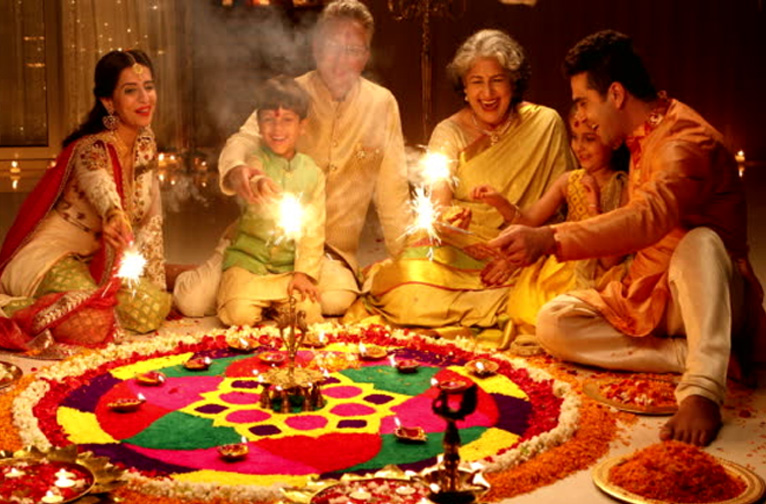
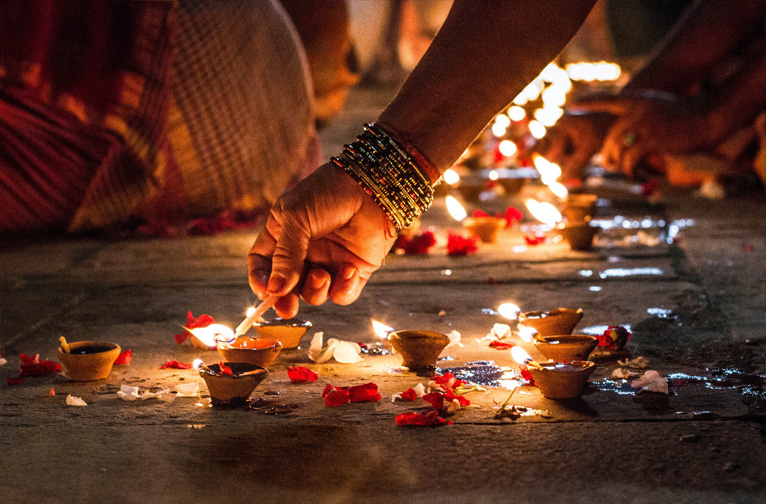
Celebrated all over India, Diwali, popularly known as the ‘Festival of Lights’ is a magical highpoint on the annual event calendar in the country. The festival falls on a moonless night in the month of October/November. Diwali is an exuberant welcome to Lord Rama, who returns home safely from 14 years of exile to Ayodhaya. The air resonates with the sounds of firecrackers and lighted lamps and fairy lights illuminate the dark night of Amavasya in homes and even commercial establishments, celebrating the return of the beloved god. It also heralds a new year with people dressed in new clothes, feasting and exchanging of gifts. Prayers are offered in thanksgiving and an elaborate worship of the Lakshmi, the goddess of wealth, are held. It’s a time when families and friends from home and abroad try and make it a point to congregate together to enjoy the festive cheers. A storm of delicacies and sweets and desserts emerges from the family kitchen to the delight of the feasting gathering.